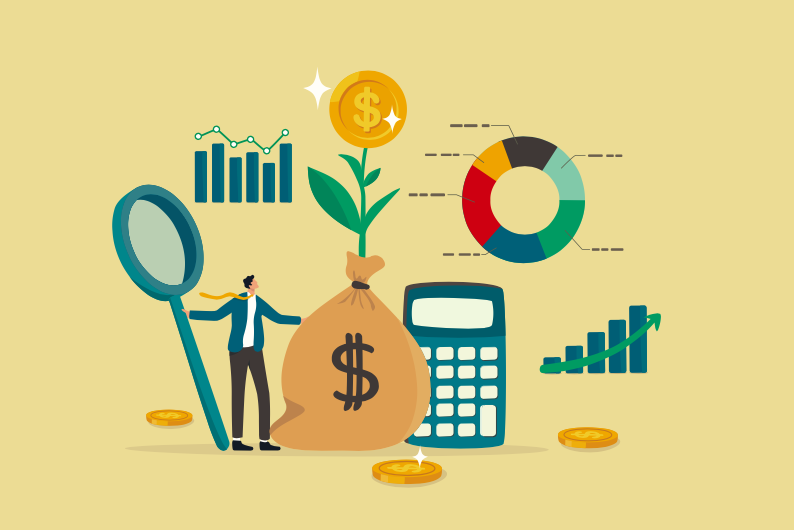
Introduction
When it comes to large financial commitments like a $500,000 loan, understanding your monthly payment options is crucial. Whether you are planning to purchase a dream home, invest in a business, or finance a major project, knowing how to manage the monthly payments effectively can make a significant difference in your financial stability. In this article, we will explore different strategies to handle the monthly payments for a $500,000 loan, ensuring you make informed decisions and manage your finances responsibly.
1. Breaking Down the Loan Amount
Before diving into the monthly payment details, let’s first break down the loan amount. A $500,000 loan is a substantial financial undertaking, and it’s essential to comprehend its impact on your overall financial picture.
1.1 Loan Purpose and Terms
Understanding the purpose of the loan and the associated terms is vital. Whether it’s a mortgage, business loan, or personal loan, the terms may vary significantly. Knowing the interest rate, repayment period, and any additional fees will help you plan your monthly budget accordingly.
1.2 Down Payment Considerations
In certain cases, lenders might require a down payment before approving the loan. Evaluating the down payment requirements and arranging the necessary funds should be part of your financial planning.
2. Monthly Payment Options
Managing a $500,000 loan’s monthly payments may seem daunting, but you have several options to choose from, depending on your financial situation and long-term goals.
2.1 Fixed-Rate vs. Adjustable-Rate
When opting for a mortgage loan, you’ll often come across the choice between fixed-rate and adjustable-rate mortgages.
2.1.1 Fixed-Rate Mortgage
A fixed-rate mortgage offers stability, as the interest rate remains constant throughout the loan’s duration. This option provides predictability in monthly payments, making budgeting more manageable.
2.1.2 Adjustable-Rate Mortgage (ARM)
An ARM comes with an initial fixed-rate period, followed by rate adjustments at predetermined intervals. While this may lead to fluctuations in monthly payments, it could be beneficial if you expect interest rates to decrease in the future.
2.2 Bi-Weekly Payments
Rather than making monthly payments, consider splitting the total into bi-weekly payments. This approach can lead to significant interest savings over the loan’s life and help you pay off the loan faster.
2.3 Making Extra Payments
If your loan terms allow, making extra payments towards the principal amount can accelerate the repayment process. This reduces the overall interest paid and shortens the loan duration.
3. Refinancing Options
Throughout the loan term, you might encounter situations where refinancing could be a viable option to improve your financial position.
3.1 Lower Interest Rates
If market conditions have changed since you first took out the loan, refinancing at a lower interest rate could lead to reduced monthly payments, potentially saving you thousands of dollars over time.
3.2 Shorter Loan Terms
Refinancing to a shorter loan term may increase your monthly payments, but it allows you to become debt-free sooner, saving you substantial interest costs.
4. Considerations and Precautions
While managing a $500,000 loan, it’s crucial to take certain precautions and consider external factors that may impact your ability to make timely payments.
4.1 Emergency Fund
Maintaining a robust emergency fund ensures you can continue making payments even during unexpected financial hardships.
4.2 Insurance Coverage
Having appropriate insurance coverage, such as mortgage protection insurance or business interruption insurance, can safeguard your ability to make payments in unforeseen circumstances.
Conclusion
A $500,000 loan is a significant financial commitment that requires careful planning and consideration. Understanding your monthly payment options, choosing the right loan terms, and exploring refinancing possibilities can help you manage the loan effectively and achieve your financial goals. Remember to assess your financial situation regularly and make adjustments when necessary to stay on track.
FAQs
1. Is a $500,000 loan suitable for buying a home? A $500,000 loan can be suitable for purchasing a home, especially in areas with higher property values. However, it’s essential to consider your income, expenses, and long-term financial goals before committing to such a significant loan.
2. How can I reduce the interest paid on a $500,000 loan? You can reduce the interest paid on the loan by opting for a shorter loan term, making extra payments, or refinancing at a lower interest rate when market conditions are favorable.
3. What if I face financial difficulties during the loan term? If you face financial difficulties during the loan term, contact your lender immediately to discuss possible solutions. Having an emergency fund and appropriate insurance coverage can also provide some safety net.
4. Can I make bi-weekly payments for any type of loan? Bi-weekly payments are more commonly associated with mortgages, but some lenders might offer this option for other types of loans as well. Check with your lender to confirm the availability of this payment method.
5. Is it better to choose a fixed-rate or adjustable-rate mortgage? The choice between a fixed-rate and adjustable-rate mortgage depends on your risk tolerance and interest rate expectations. A fixed-rate mortgage offers stability, while an adjustable-rate mortgage provides potential savings if interest rates decrease.




